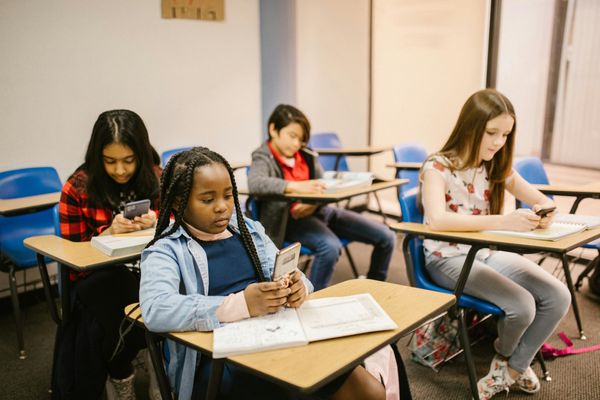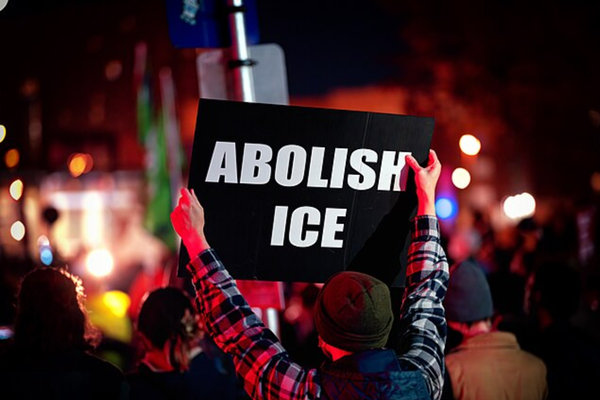
This story on schools in Puerto Rico was produced by the Hechinger Report, a nonprofit, independent news organization focused on inequality and innovation in education. Sign up for the Hechinger newsletter.
There was little her family could salvage. Just a few plastic chairs, some photos, her school uniform.
The flooding last fall that devastated the home of Deishangelxa Nuez Galarza, a fifth-grader in this coastal area of southern Puerto Rico, also closed her elementary school, El Coquí, for three days while staff cleaned out a foot of muddy water from every first-floor room. Deishangelxa missed two weeks of classes, which upset her.
“School is very important to me because I want to keep studying,” she said. “I want to become a nurse.”
It was just the latest interruption in schooling that’s been characterized by near-constant disruption. Deishangelxa started kindergarten at the Ana Hernández Usera elementary school in 2017, the year Hurricane Maria struck the island. Schools across Puerto Rico were closed for an average of four months.
Ana Hernández Usera never reopened. Like more than 260 other schools across Puerto Rico with low enrollment, it was closed permanently as part of wider cost-cutting measures. Deishangelxa transferred to El Coquí, but the island would not get a break from natural disasters. She was eight in January 2020, when earthquakes rocked the island, closing her school for three months.
A few weeks after her school reopened, it closed again because of Covid-19. Deishangelxa struggled with virtual learning and fell far behind. In August 2021, in-person schooling finally resumed for students on the island, but not for long. Just a year later, Hurricane Fiona unleashed a furious attack on the island, causing widespread flooding and infrastructure damage. Deishangelxa was 10 when schools shut again in September 2022 – this time for two weeks.
The troubles Deishangelxa has faced are mirrored across Puerto Rico. Since 2017, natural disasters have pounded the island – decimating homes, crippling the power grid and gutting infrastructure. That repeated trauma, what one resident called “collective island PTSD”, has been compounded by widespread poverty and bureaucratic challenges.
Puerto Rico’s school system is both uniquely vulnerable to natural disasters that are becoming more common across the US because of climate change, and unusually ill-equipped to help children recover from the learning setbacks that come with them. The island has faced corruption and mismanagement in local government, billions of dollars in debt and mass emigration that has essentially halved the island’s student population in 15 years, from almost 550,000 in 2006 to 276,413 in 2021.

The Puerto Rican school district, the sixth largest in the US, is often ignored in conversations about US education. Yet experts say it is the canary in the coalmine that other districts could learn from as they grapple with the effects of climate change on learning, health and infrastructure.
“How do we make up for the impact of those disruptions of school and how do we make schools more resilient?” said John King, a former US secretary of education who is co-chair of This Is Planet Ed, an initiative of the Aspen Institute that works on climate solutions through the education sector. “That’s an acute problem in Puerto Rico today, but it’s a problem we’re already seeing in other parts of the country that’s going to grow.”
Miguel Cardona, the secretary of education under President Biden, promised “a new day” for Puerto Rico. Over the past two years, he has signed off on almost $6bn in federal dollars for the island’s school system, almost a billion of which was made possible by reversing a Trump administration decision to restrict pandemic aid to the island. The money has so far been used to pay for temporary teacher salary increases, hire hundreds of school mental health professionals and fund tutoring programs.
Chris Soto, a senior adviser to Cardona who heads the federal effort to improve Puerto Rican schools, said it was important to tackle not only the system’s short-term needs, but also some of its systemic issues, such as stifling bureaucracy and crumbling infrastructure.
“That way we’re not having the same conversation in 20 years,” he said.
Academic outcomes in Puerto Rico have been on a steady decline since Hurricane Maria. On the math test that children all over the US take (the National Assessment for Educational Progress, commonly called the Nation’s Report Card), about a third of fourth-graders and a quarter of eighth-graders on the mainland were considered “proficient” in 2022. By comparison, so few students made the cut in Puerto Rico in either grade that year that the percentages rounded to zero.
Online learning was particularly challenging for Puerto Rican students, many of whom lack internet access and computers at home. At El Coquí, Deishangelxa’s school, principal Jorge Luis Colón González said a third of his students were now struggling, despite a new after-school academic recovery program launched this academic year at the school with federal funds. More than 75 children, including Deishangelxa, stay behind after school every day for two hours of extra tutoring. Colón said he hoped this additional support could help his students catch up. “I’m very worried,” he said.

Yiria Muñiz, a teacher at a Catholic girls’ school, Academia María Reina, in San Juan, said Puerto Rico’s students have experienced a full five years of disrupted learning, and it shows. Muñiz said she used to teach her students the metric system in a week; now, it takes more than two months.
“2017 and 2022 children are not the same. If you think about my seventh-graders right now, they’ve been going through something ever since second grade. So they have missed on many, many opportunities to develop social, academic, behavioral, emotional skills,” she said.
Muñiz is constantly having to change her curriculum to accommodate her students. “Everything I’ve done before is no good any more,” she said.
Even more worrying than the academic disruptions, perhaps, is the mental health crisis among the island’s children. One recent assessment found that approximately 68,000 kids, almost a third of all students, were identified as needing help because of an emotional, mental or behavioral situation.
Compounded trauma from the barrage of disasters lingers. Teachers speak of children crying when a passing truck makes the ground vibrate, because it reminds them of an earthquake. Some kids become distracted in class at the slightest sound of raindrops.
Puerto Rico’s plan included using the $6bn recovery money provided by the federal education department to beef up existing school mental health teams, in part by hiring more than 420 school nurses and 110 school psychologists to address severe staff shortages among school health personnel.
Dinelys Rodríguez, 14, studies at the Delia Dávila de Cabán school in Toa Baja, about 25 minutes from San Juan. She remembers waiting in line with her mother for more than three hours just to enter a supermarket after Hurricane Maria. Now, every time there’s a storm, she worries she won’t have enough to eat. That time was challenging, but she and her brother, Jadniel, 11, also remember playing cards with family in the aftermath of the hurricanes and taking showers in the rain, memories that make them smile.
But as they’ve grown, they’ve started to worry about missing so much school. Dinelys wants to be a lawyer. “I want to be someone in life,” she said. “How will I pass my school exams and graduate if I can’t go to school?”
While public schools on the island had seen a steady decline in enrollment for almost two decades, the academic year immediately after Hurricane Maria saw a precipitous drop of more than 42,000 children. Since 2021, enrollment has fallen by another 16,878.
Ana Díaz, who teaches third-graders at the Delia Dávila de Cabán school, has experienced the plummeting enrollment first-hand. Five years ago, she had 28 students in her class. This school year she started off with just 14.
Díaz said many students had gone to the mainland, usually to Florida to stay with relatives. But that’s not an easy path – not only must they get accustomed to a new place, new friends and new language, but the curriculum isn’t aligned with that in Puerto Rico, and kids often struggle academically, she said. Sometimes they return to the island, and it’s often hard for them to readjust and catch up with what they’ve missed.
“The poor outcomes are super frustrating,” said Díaz. “Because I see the potential in a lot of them.” This migration has implications for Díaz’s job as well. If more students leave, she could be transferred to a different school.
Puerto Rico’s secretary of education, Eliezer Ramos Parés, acknowledges the tough road ahead. But he is optimistic that the federal money will help and that the US government, non-profits and the local education department will find ways to work together.
“Trust is important and for trust, there needs to be transparency,” he said. “Puerto Rico can’t do it alone; we need to be a team.”
Outside El Coquí – named after a tiny species of frog with an outsized voice that is beloved on the island – thousands of yellow and white butterflies flutter around like confetti. But despite the beauty around them, the area’s residents exude a palpable sense of anxiety, fearing the next natural disaster. Locals are always on the alert for warning signs: here in southern Puerto Rico, if certain ocean birds are suddenly found inland, people believe another disaster is coming, Colón said.

The per-capita income in this coastal region of Salinas is less than $10,000 a year; just over a third of working-age residents are in the workforce. Colón, who grew up poor in a nearby town, said education was his way out. It’s a path he fervently wants for his students.
Because of that, even with the challenges of the past few years, Colón said his resolve to keep working in education was stronger than ever.
“When something isn’t working, we change strategies,” he said. “But we will never give up.”







